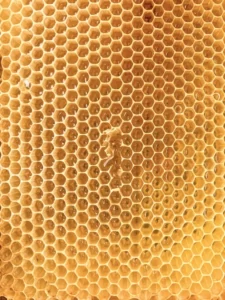New Zealand Manuka Honey is tested for any unique properties in independent laboratories in New Zealand. There are many chemical markers that are tested and the results tell if the honey is a monofloral Manuka Honey or a Multifloral Manuka Honey.
NPA stands for Non-Peroxide Activity. Essentially it represents the antibacterial levels in the honey. This number is generated from the MG or Methylglyoxal levels in the honey.
The active elements in Manuka Honey that are tested for are:
- Leptosperin
- Dihydroxyacetone (DHA)
- Methylglyoxal (MG or MGO)
- Hydroxymethylfurfural (HMF)
The Methylglyoxal levels in the honey represent the antibacterial levels in the Manuka honey. The NPA number is calculation based off the MGO levels.
To help simplify this further, you will also always find the NPA and UMF numbers will correspond. e.g. If the Manuka Honey is a UMF™ 5+ then the NPA will also be 5+. While NPA is the measurement of a specific metric, UMF is the measure of many different elements as listed above.
Purchasing UMF Honey ensures you are getting a quality honey as they UMF Honey Association also do further testing and checks on it’s members to ensure its Manuka Honey is never adulterated or
It is more common in countries like the UK to use the term NPA when purchasing Manuka Honey e.g. NPA 10+.
Europe tends to shop based on the actual MGO number e.g. MGO 550+
The rest of the world including USA, Canada, Kuwait, UAE, Saudi Arabia tend to buy Manuka Honey looking for a combination of MGO and UMF gradings.
UMFHA Manuka Honey provides more assurances for purchasers as the companies who are members have to maintain and adhere to specific guidelines.




2 comments
Victoria Woodward
I purchased Manuka Honey and all it says is NPA 5+ .
It is authentic honey, but is it a good grade for health purposes? I realise that all kinds of honey are good for the health, and am aware that Manuka honey is extra good, but I am curious to know if I have purchased a good one. It is an N.Z.Manuka honey,
packed for the British market in Belgium. It was packed for the Aldi stores and states that it is 100% Manuka Honey.
Please let me know. I need a health booster.
Lisa
Hi Victoria – thanks for the great question. The Manuka Honey you have purchased has an MGO level of about 80 and an equivalent UMF grading of about UMF 5+.
This is where Manuka Honey typically starts as monofloral manuka honey. Meaning it has been collected predominantly from the Manuka tree flowers. It is about the lowest grading of monofloral manuka honey and may even be a multiflora. If it is manuka honey labeled and packed in New Zealand it has to say if it is a monofloral or multifloral manuka honey.
This doesn’t mean it’s poor quality or low value. It is typically very affordable and tasty manuka honey grade at NPA 5.
Unfortunately the MGO (methylglyoxal) levels are not very high. This is the chemical compound in the honey which gives it it’s antibacterial properties. The higher the NPA, MGP or UMF number, the higher the MGO levels and therefore the better the health and wellness benefits.
Typically, a UMF or NPA of 10+ is a good starting point for topical use but an NPA or UMF of 15+ or higher will benefit you more.
There are some companies who even go as high as UMF 26+ and higher!
So, you can enjoy that manuka honey knowing it’s delicious and has some wellness benefits but you might want to level up to get the best the manuka honey has to offer.
Hope that helps!